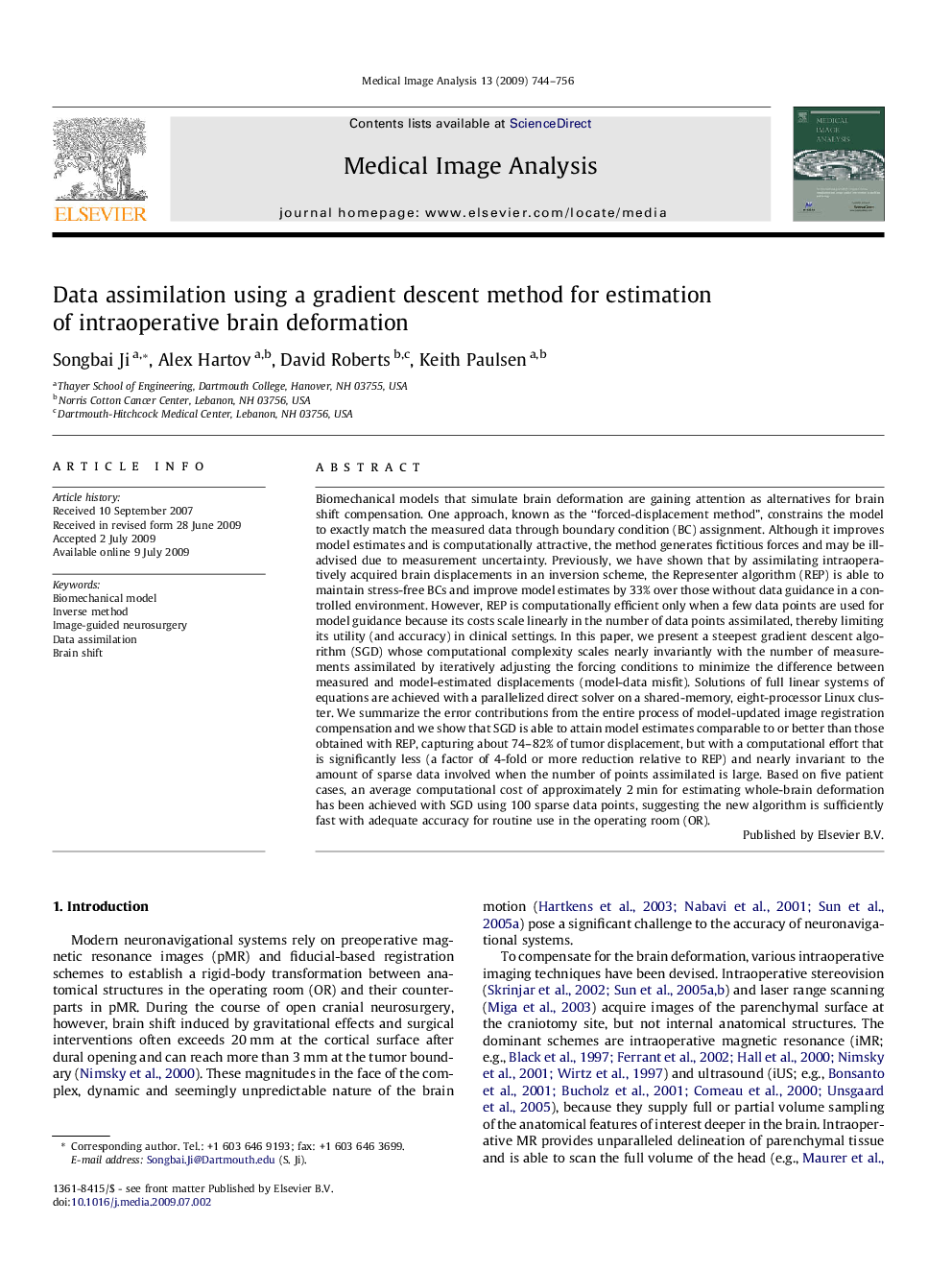| کد مقاله | کد نشریه | سال انتشار | مقاله انگلیسی | نسخه تمام متن |
|---|---|---|---|---|
| 445283 | 693169 | 2009 | 13 صفحه PDF | دانلود رایگان |

Biomechanical models that simulate brain deformation are gaining attention as alternatives for brain shift compensation. One approach, known as the “forced-displacement method”, constrains the model to exactly match the measured data through boundary condition (BC) assignment. Although it improves model estimates and is computationally attractive, the method generates fictitious forces and may be ill-advised due to measurement uncertainty. Previously, we have shown that by assimilating intraoperatively acquired brain displacements in an inversion scheme, the Representer algorithm (REP) is able to maintain stress-free BCs and improve model estimates by 33% over those without data guidance in a controlled environment. However, REP is computationally efficient only when a few data points are used for model guidance because its costs scale linearly in the number of data points assimilated, thereby limiting its utility (and accuracy) in clinical settings. In this paper, we present a steepest gradient descent algorithm (SGD) whose computational complexity scales nearly invariantly with the number of measurements assimilated by iteratively adjusting the forcing conditions to minimize the difference between measured and model-estimated displacements (model-data misfit). Solutions of full linear systems of equations are achieved with a parallelized direct solver on a shared-memory, eight-processor Linux cluster. We summarize the error contributions from the entire process of model-updated image registration compensation and we show that SGD is able to attain model estimates comparable to or better than those obtained with REP, capturing about 74–82% of tumor displacement, but with a computational effort that is significantly less (a factor of 4-fold or more reduction relative to REP) and nearly invariant to the amount of sparse data involved when the number of points assimilated is large. Based on five patient cases, an average computational cost of approximately 2 min for estimating whole-brain deformation has been achieved with SGD using 100 sparse data points, suggesting the new algorithm is sufficiently fast with adequate accuracy for routine use in the operating room (OR).
Journal: Medical Image Analysis - Volume 13, Issue 5, October 2009, Pages 744–756